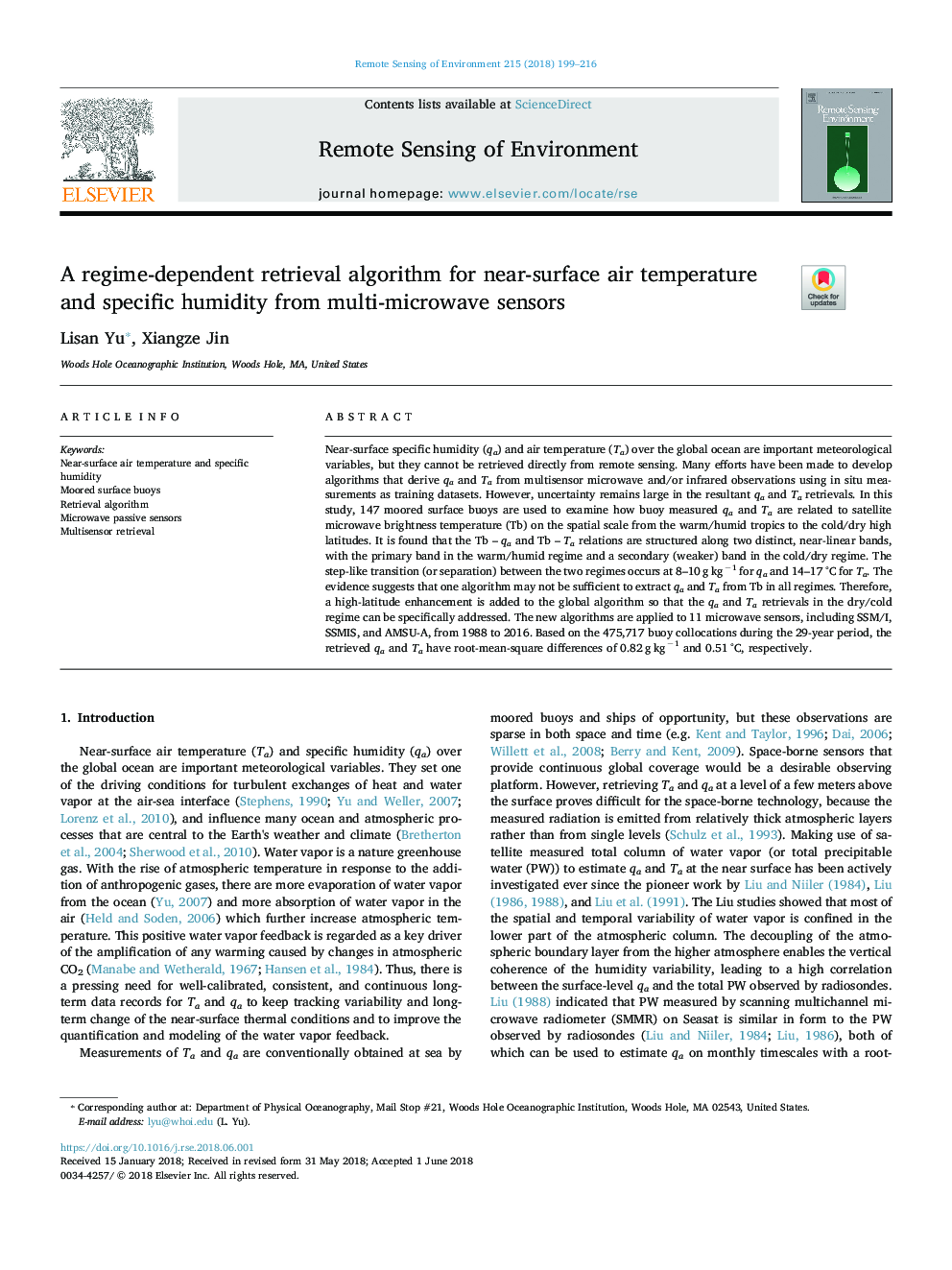| Article ID | Journal | Published Year | Pages | File Type |
|---|---|---|---|---|
| 8866471 | Remote Sensing of Environment | 2018 | 18 Pages |
Abstract
Near-surface specific humidity (qa) and air temperature (Ta) over the global ocean are important meteorological variables, but they cannot be retrieved directly from remote sensing. Many efforts have been made to develop algorithms that derive qa and Ta from multisensor microwave and/or infrared observations using in situ measurements as training datasets. However, uncertainty remains large in the resultant qa and Ta retrievals. In this study, 147 moored surface buoys are used to examine how buoy measured qa and Ta are related to satellite microwave brightness temperature (Tb) on the spatial scale from the warm/humid tropics to the cold/dry high latitudes. It is found that the Tb - qa and Tb - Ta relations are structured along two distinct, near-linear bands, with the primary band in the warm/humid regime and a secondary (weaker) band in the cold/dry regime. The step-like transition (or separation) between the two regimes occurs at 8-10â¯gâ¯kgâ1 for qa and 14-17â¯Â°C for Ta. The evidence suggests that one algorithm may not be sufficient to extract qa and Ta from Tb in all regimes. Therefore, a high-latitude enhancement is added to the global algorithm so that the qa and Ta retrievals in the dry/cold regime can be specifically addressed. The new algorithms are applied to 11 microwave sensors, including SSM/I, SSMIS, and AMSU-A, from 1988 to 2016. Based on the 475,717 buoy collocations during the 29-year period, the retrieved qa and Ta have root-mean-square differences of 0.82â¯gâ¯kgâ1 and 0.51â¯Â°C, respectively.
Keywords
Related Topics
Physical Sciences and Engineering
Earth and Planetary Sciences
Computers in Earth Sciences
Authors
Lisan Yu, Xiangze Jin,
